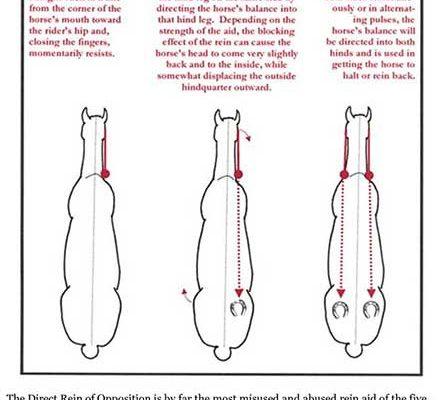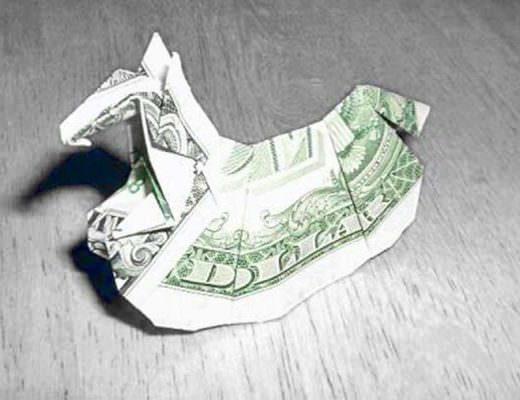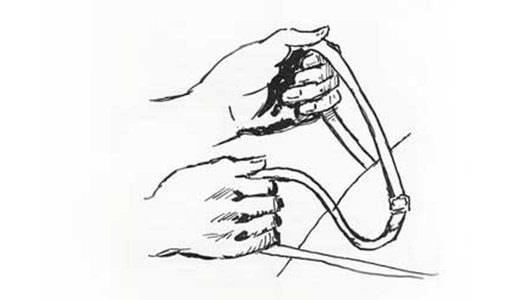I should think that the best place to begin with describing the aids we use to influence the horse, is to first find the exact meaning of aid.
Aid
.noun (plural aids)
- Help, succor, assistance, relief.
- The person who promotes or helps in something being done; a helper; an assistant
- Something which helps; a material source of help.
- An aid-de-camp, so called by abbreviation; as, a general's aid.
- Aid: verb (aids, aiding, aided)
- (transitive) To support; to give support to; to further the progress of; to help; to assist.
The etymology of the word Aid is from Old French – Aide, from Latin adjuvare, “to assist.”
Perhaps the first point to make on the definition of aid, is that in no way does the meaning ever describe it as a means of control. The aids that the rider uses, are meant not as a way to force, coerce or otherwise take away the will, freedom or direction of the horse, the aids are there to help support the horse in his own natural abilities, if you will. There is a fine line between force and guide when working with the aids, our goal is to guide the horse, redirect his own forces, not contain them. It is with keeping this in mind, that our refinement and perfection of the aids will develop more freely.
Rule of the aids
There is a certain amount of predictability in the aids, once we come to understand their function. Along with a predictability of the aids, there are also predictable patterns in the horse as to how they interact and react to the aids. Before setting out to practice and discover these rules one on one with your horse, I would like to cover a few rules that should be followed in the use of the aids.
- NEVER PULL : horses instinctively move into pressure, when you pull, it incites the horse to respond by pulling back. With time and practice you can train the horse to respond to pulling by giving into the pressure, this reaction however is not a natural one. Not only is yielding to pulling an unnatural reaction to the horse, every time you use the force of pulling to control or direct the horse, you are showing him exactly how much (or how little) strength you have. Once a horse learns he is stronger than you, he will always win the pulling fight. In addition, horses come to resent the action of pulling. The horse / human relationship has turned into a dictatorship.
- NEVER FORCE : what is forcing? Forcing is what it takes to go beyond the touch barrier. You can come to touch with your hand, leg, etc, but once you go beyond the touch and begin pulling or pushing, you are forcing. There is no use in forcing a horse, physically changing his physical shape, by overuse of the aids. If the horse is so unresponsive to the aids, work needs to be done to create more sensitivity to light aids, rather than using a greater amount of force.
- AS LITTLE AS POSSIBLE, AS MUCH AS NECESSARY : What this means is that you work to do as little as possible, keeping your aids infinitely light. However, on the same end you do as much as is necessary in that situation. For example, working at home in your arena, using the lightest touch (or non-touch, which will be explained later) at all times whether you get the desired response or not may be acceptable, whereas in a situation that could be dangerous for you and the horse, using a firmer touch to ensure the desired result may be needed to maintain safety. This is not to say that you do not strive for using the lightest touch possible under all circumstances, but that there may be times when the lightest touch is not appropriate.
- EVERY HORSE IS PERFECT : Every horse knows how to be a horse, more so than we can ever know, being humans. If an aid you are using consistently fails to bring about the desired result on the horses you are riding, change it. The definition of insanity is to do the same thing repeatedly, while expecting different results. Aids are meant to guide and support the actions of the horse.
- SINGULAR AIDS : The use of the aids should never be so complex as to confuse the rider and horse. If you are using more than two aids at any one time, it is too much. While horses are capable of learning complex combinations of aids, how many get confused in the process? If it cannot be done with a single aid, the horse is not ready to perform it.
- NO CONTRADICTIONS : The aids must never contradict each other, with exception to the Combined Halt. The reins never oppose one another, creating conflict and blocks. The reins and legs are never used against each other (i.e. increasing speed with the legs while asking for slowing with the reins). This applies laterally, diagonally and bilaterally.
The list of Rules may seem lengthy, but as you begin working they will make more sense to you. Questions will be answered by these rules, and will help form new questions, which leads to greater understanding and knowledge of the aids.
Resistance
There are times when a horse will resist the aids. There are three ways a horse can resist the rider; through weight, physical force and mental resistance. The first two resistances (weight, force) are simple to overcome. The resistance of the mind is the resistance that there is no set solution. Time, building trust and a relationship are the means to break down this resistance, and is not a topic to be discussed in conjunction with the use of the aids. Resistances of weight and force are the common means that a horse will passively (or not so passively) protest the rider's efforts.
- Resistance of Weight – the horse uses his positioning of weight to resist.
- Resistance of Force – the horse resists by the contraction of muscles.
Resistance of weight is commonly associated with horses who are young and unbalanced. It is easy for them to misplace their weight to the forehand or off to one side or the other. The solution for resistances of weight is by the application of the Half Halt. The Half Halt changes the posture of the horse, which in turn re-balances the weight of his body onto the haunches, allowing the horse to move with greater precision.
Resistance of force is associated with horses who have learned to pull against the rider's pull. Both types of resistance often elicit a response from the rider to attempt to pull the horse into the position that they desire, which only completes the cycle of resistance. Resistance of force can only be solved through Vibrations. The use of vibration through the reins is based on the principle that to release muscle tension you have to create a non-static, non-invasive energy to the source of resistance. In other words, think of vibration in the way of massage. You do not dent the horse, you do not pry or attempt to force relaxation. Simply put, you are creating an environment that over time the horse cannot resist through force.
Vibrations can be done through the fingers, the wrist or the whole arm. The preferred method is through the wrist, because the action becomes left to right with the wrist, there is no backward action, whereas with the fingers you create an opening and closing, that inevitably creates a forward/backward motion. The use of the whole arm in vibrations may be needed for large vibrations, but for general use lacks precision and tact.
Half Halt solves the problem of weight resistance. If the horse fails to respond to the Half Halt, the resistance of weight has changed to a resistance of force, which requires the use of Vibrations. Once Vibrations have solved the resistance of force, you can once again employ the Half Halt to solve the resistance of weight.
Rein aids
The use of the reins will be described first, since not only does the horse's mouth come first, but the major ability to direct and guide the horse comes from the use of the reins. Learning how to properly use the reins in a tactful manner is the most difficult lessons to learn, it is no wonder that so many riders teach and have been taught to use their legs in the majority of influence over the direction of the horse. The legs not only require less tact, but are less capable of acting with the measure of precision that an educated hand is. The key phrase here is educated hand, the beginner hand often lacks more precision than a beginner's legs. It is for this reason then that the use of the hands should be practiced so much, considering that we as humans have a nature to do everything with our hands, why then do we so often consider the primary use of the hands to be evil or uneducated?
The half halt
The ever mysterious Half Halt (from now on referred to as HH). I still recall my first instructors describing it to me as being “something that involves your hands, legs, seat and weight” of which it was assumed the magical combination of these four things would yield the desired result of making your horse pause momentarily to regroup and rebalance himself. When I thought I was getting the correct response, it was still shrouded in mystery because I didn't know what I was looking for, or at. The HH is something that nearly everyone in the horse world has heard about, if not discussed or practiced. Despite the well known use of the HH in riding and training, it is still an aid that at times seems impossible to acquire with consistency.
The function of the HH is indeed to rebalance the horse, but how it does this is not through means of magic. Rather the HH causes the horse to change his posture, in turn affecting how he carries himself – putting the weight on the haunches and taking it off the forehand. The very posture of the horse dictates how and where he will move at any given moment, therefore posture is everything in the way of directing and guiding the horse.
Without using force, how are we to change the posture of the horse? Is it by a specific combination of aids – leg, seat, hand & weight? Perhaps the real question to ask, is how do we perform the HH when we are not seated upon the horse?
Actions of the HH in order of occurrence
- ELEVATION : The horse's head will elevate to some measure, by a little or by a lot. There is no change in pace.
- SLOWING : Following the elevation of the horse's head, a continuation of the HH will produce a slowing of the pace. This slowing may produce a transition downward, say from canter to trot or trot to walk, or simply a change in the length of stride at any given gait.
- HALT : The horse will halt and stand.
- REIN BACK : Continued application of the HH from the halt will produce rearward motion.
Often when the rider is first applying the HH and expecting the horse to halt, they get only the first stage of HH, elevation, which causes the rider to become concerned because not only did the horse not slow or halt, but elevated its head instead. Elevation is not a form of evasion when the HH is being applied. Often the actions of elevation will be very apparent when the horse is first being taught HH, or the rider is first learning how to HH, but as both parties become more refined the actions are smaller and truly become invisible. The need for a large amount of elevation to change the posture of the horse diminishes, because the horse carries more weight on the haunches during the ride as a result of continual posture alignment through the HH. Just as a human will slouch, over time practicing sitting straight, the changes to sitting even straighter become less and less because you are closer to the perfect posture for balance.
If the horse gives you a halt when you HH, and all you wanted was elevation or a slowing of the gait, you are using too much hand. Remember, use as little as possible, as much as necessary. On the opposite end of the spectrum, the horse may choose to resist the HH through force, of which must be addressed by Vibrations (as discussed earlier) before the HH.
The HH can be employed through a single rein or both reins together. The preferred method is to use a single rein – keeping with separating the aids and keeping them as simple as possible for the horse to understand.
Reverse half halt
A by-product of the HH, is the Reverse Half Halt (from now on referred to as RHH). The theory of the RHH is that you can create impulsion and forward energy through the reins. A RHH the opposite of a HH. The RHH, unlike the other rein aids, is not one of any natural reaction from the horse, necessarily. It is an aid that is first taught from the ground, where you have the physical ability to bring the horse forward using the reins. While mounted, we lose that ability, being as we do not ride with wooden reins and cannot physically push the horse forward with the reins. It is a conditioned response that you transfer from the ground to under saddle, supported by the action of the whip or legs, which lessens until the impulsion is created solely through the reins by the RHH.
What purpose does the RHH have in riding? If a rider has the ability to use his legs, and whip, why then should you have to create a third method for impulsion? An answer to this question lies in the ability to be very precise with our hands. It is said that our hands are so sensitive, that a trained hand can learn to identify a temperature change of as little as ½ degree F. It would seem then that the ability to create so specific an amount of increased impulsion at any given moment during a ride would lead to precision that is unheard of.
The RHH has a secondary purpose besides merely creating forward energy, the RHH is a useful tool in lateral work, where you need to create more energy in one direction over the other. The opening hand, now uses the RHH to produce enthusiastic movement in the desired direction, without over using the legs or whip.








That is very interesting about the RHH. I’ve never heard of that name, but your description sounds a lot like what I do.
Good article, thank you. Especially the HH description.
Chris,
I don’t hear references to it all that often within CD, it could also be referenced by another name too with the same inference to the horse. It is very useful, however, but takes a little in the beginning to teach to the horse. Once trained it is very useful and obviously can be applied to a single rein to create energy on one side, or through both reins.
Cheers 🙂
That is very interesting about the RHH. I’ve never heard of that name, but your description sounds a lot like what I do.
Good article, thank you. Especially the HH description.
Chris,
I don’t hear references to it all that often within CD, it could also be referenced by another name too with the same inference to the horse. It is very useful, however, but takes a little in the beginning to teach to the horse. Once trained it is very useful and obviously can be applied to a single rein to create energy on one side, or through both reins.
Cheers 🙂
I love the way you write! Very concise and succinct. I’m a KISS-type person and learned to ride by kicking to go and pulling back to stop 50 years ago. Unlearning that is one of the hardest things I’ve ever attempted. I really appreciate the simplicity of your explanations. Thank you!